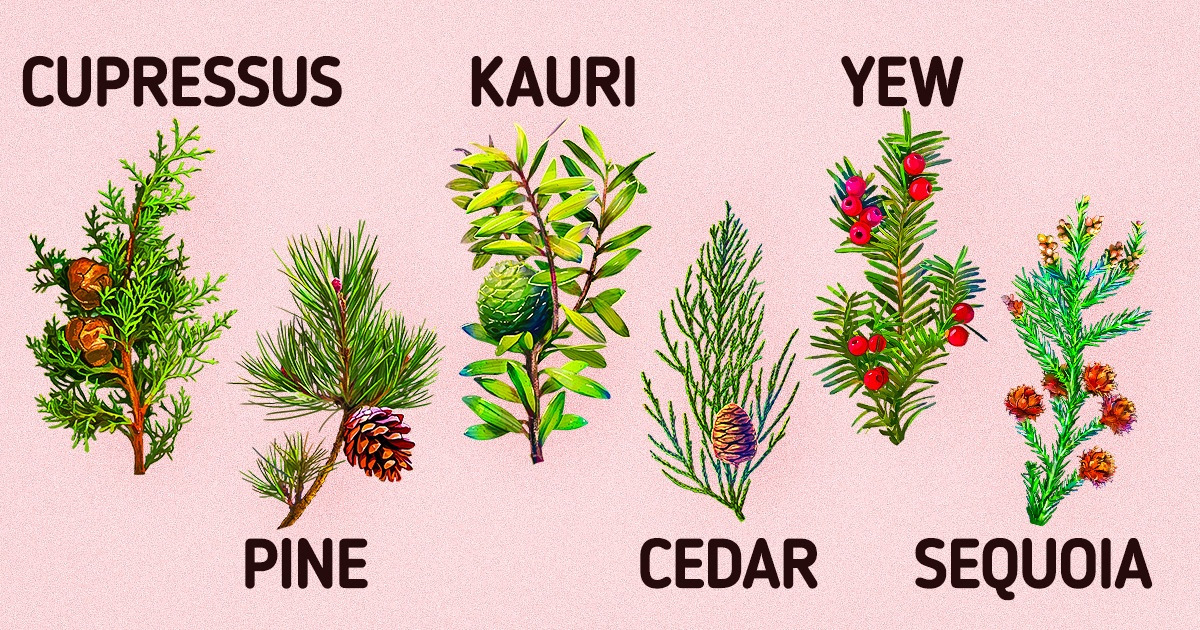
The Types of Conifers There Are
5-Minute Crafts is going to tell you about different conifers — some of them you already know, and others just may surprise you.
What conifers are
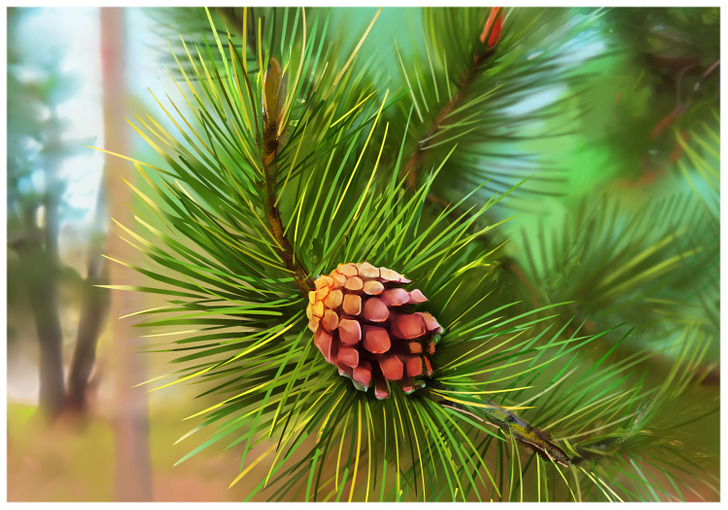
Conifers are a group of plants that have cone-bearing pines. Most of them are trees but some are shrubs. Instead of leaves, most of them have needles that don’t fall off in winter, but there are exceptions. Conifers are spread around the entire world but mostly in the Northern Hemisphere. Coniferous woods are huge storers of CO2 and they are used for the production of paper and lumber.
There are more than 600 kinds of conifers. Of course, we can’t fit all of them in a single article, which is why we’re only going to talk about some of them — the most popular and interesting ones.
Different kinds of conifers
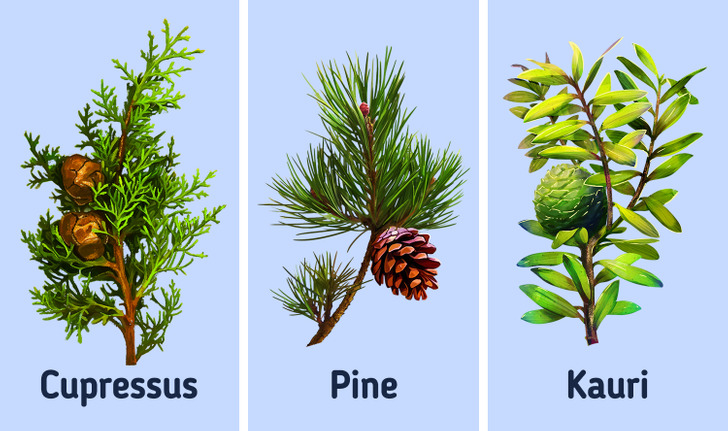
- Pine is a type of tree you know very well because it’s associated with Christmas. The tallest pine is 268.35 ft. And the oldest tree (one of the oldest living organisms on the planet) was born around 4,800 years ago. Pine is easy to tell from other trees because the needles are in a bundle from 2 to 7 needles in each.
- Cupressus can be a tree or a big shrub. The name of the tree is the name of a young man from an old legend that accidentally shot his favorite deer. The man was so sad that Apollo turned it into a plant, a symbol of grief. Young trees have needle-like leaves, and old ones have scale-like leaves.
- Kauri is a conifer that can be as tall as 164 feet (50 meters) with smooth bark and a wide, thick trunk. Kauri forests are some of the most ancient in the world. The ancestors of these trees appeared in the Jurassic period (around 190-135 million years old). Kauri trees don’t have needles, they have leaves that are broad, tough, and leathery in texture. A single tree produces both male and female seed cones.
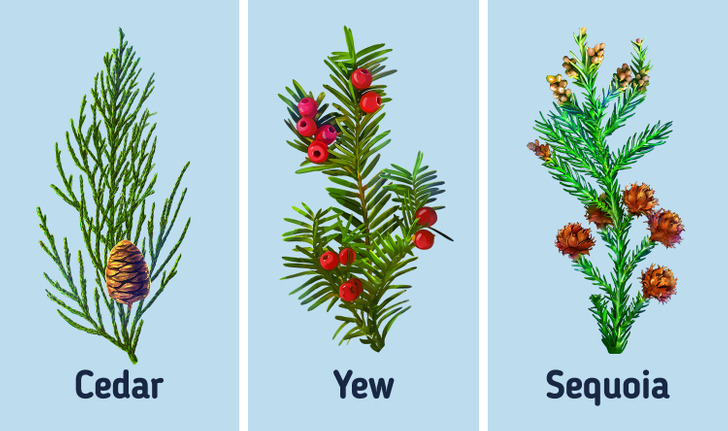
- Sequoia is the tallest tree on Earth. Some are 379 ft in height and 29.2 ft in width. The bark can reach 1 ft in width. The leaves are flat, scale-like, and dark green. Sequoias are the biggest trees growing today and weigh up to 1,910 tons.
- Cedars are trees that can reach 196 ft in height with spicy-resinous scented wood. Cedar leaves are evergreen, needle-like, and are in bunches of 15-45 needles. Cedarwood and oil are natural moth repellents, so chests wool is kept in are typically covered in this oil.
- Yews are slow-growing trees and shrubs with reddish bark and flat dark-green leaves. People made bows from yews. The yew seeds are poisonous to humans because the stomach can dissolve the shell and the toxins can spread throughout the entire body.
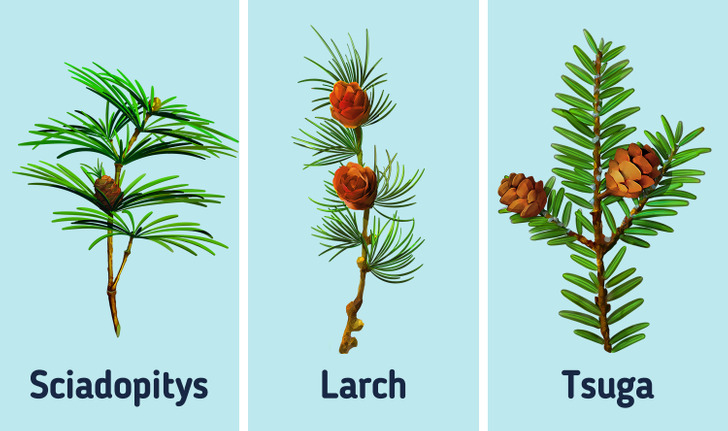
- Sciadopitys is a unique plant you can only find in Japan. It’s a living fossil that is 230 million years old. The name comes from the Greek “sciádos,” which means “umbrella.” The Sciadopitys needles go from the center to the sides, appearing like an umbrella.
- Larch is one of the few conifers that lose needles. The needles are thin, short, and are in bunches of 20-50. Larch wood is valued for its tough, waterproof, and durable qualities. It’s used for building yachts and boats.
- Tsuga is an evergreen tree of average and big size (from 33 ft to 197 ft). It looks like spruce, and it’s also cone-shaped. The cones are different-colored — from yellow-white to pale-purple. The leaves are single, small, flattened, and a bit angular.
Share This Article